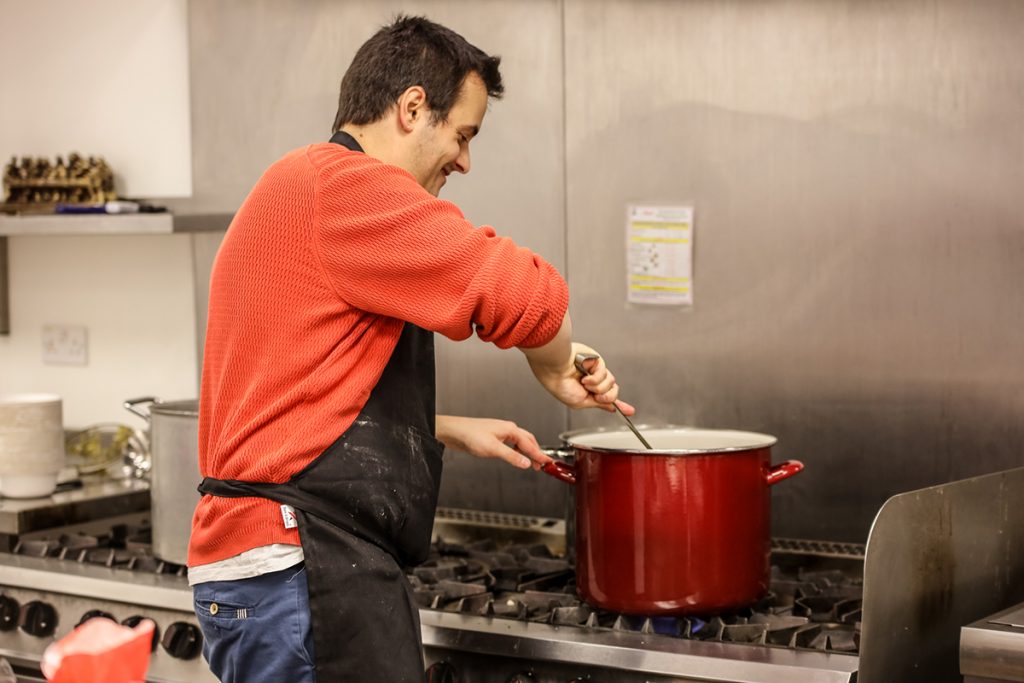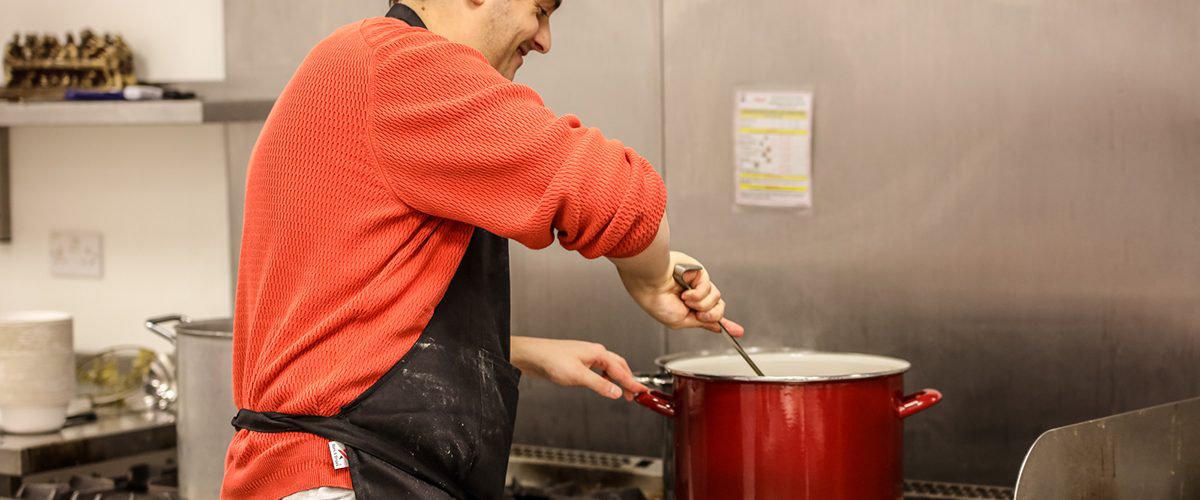Eat the Archives: Appetiser uses taste to bring to life stories from Manchester’s Jewish community, in a unique experience combining history and dining. Carmel Thomason talks to chef, Leo Burtin to find out how you can join the feast from home.
Eat the Archives is the latest trailblazer ahead of re-opening the newly refurbished Manchester Jewish Museum. What was the idea behind this event?

Leo: “Eat the Archives is a chance to interact with a Museum’s collection in a new and innovative way which allows people to make a meaningful, personal connection with the objects and stories. Participants in the project get up close and personal with artefacts from the Museum’s collection as I share the stories behind them and most importantly, over some food.
“Each story and artefact is a starting point to imagining a dish relating to that story. In other words, Eat the Archives is about interacting with the Museum through all five senses, and particularly through taste”.
The event is taking place on the evening before the Jewish festival of Purim which involves The Feast of Lots. Is this deliberate?
Leo: “It’s actually a happy coincidence, Eat the Archives isn’t intended as a Purim themed event. However it does feel fitting that the day before ‘The Feast of Lots’ (a celebration of the saving of Jewish people from persecution in the ancient Persian Empire) at a time when traditional Purim festivities have been constrained by the pandemic, we can offer people an alternative way to come and share food together, online”.
What dishes will you be preparing?
Leo: “For this ‘appetiser’ event, we will be cooking a rice dish, inspired by a story of families who moved from the Middle East to Manchester in the early 1900s. The Museum’s records show how eating habits evolved over time, to include dishes from their home countries, traditional Sephardi Jewish foods and gradually incorporating English foods more often as they settled in the region.
“I have adapted a Persian dish of steamed rice cooked with many spices, ground beef and green beans and included a local and seasonal twist by making cabbage the star of the show.
“In the wider Eat The Archives project, I cook a range of dishes including cheese and spinach borekas, Irish-Jewish inspired stews, rose and polenta cakes and a few others”.
How did you decide which stories to share with each dish?
Leo: “The stories come first and are selected in collaboration with Laura the Museum’s Creative Producer and Alex, the Curator. We select a range of stories to cover different aspects of Jewish culture and different time periods. Most importantly, I am very interested in choosing stories and artefacts which enable us to start conversations about topics that still resonate with people today. These might include cultural identity, family matters and figuring out how to fit in in a new place.
“In some cases, the stories I tell are directly about food – about a particular ingredient or cooking technique, in which case it is fairly straightforward to come up with a recipe inspired by the story. Otherwise, I might research further into what people might have eaten at that particular time, or in a particular place. Sometimes, the food is also a metaphor – for example, borekas are very delicate pastry parcels that take a lot of patience, so they serve as a reminder of the dedication of the people who prepared them on feast days”.
How do you use food to communicate?
Leo: “In my daily life, food is certainly how I show people love, care and how I welcome people. Inviting people to your table – and people accepting your food is an act of mutual trust. It lays the foundation for a certain level of intimacy.
“In my artistic life, I use food as a starting point to have a conversation about all sorts of things from culture and identity, politics, and aspirations. You can exchange more freely on a full stomach and the act of eating together stimulates your senses in very interesting ways.
“People always find personal connections in food. Any dish has the potential to remind you of another, to make connections between your own experiences and those hidden in the spices of what you are offered to eat”.
How can people take part in the event?
Leo: “For this ‘appetiser’ people signed up from the Museum’s website to receive a free kit containing all the necessary spices and instructions to create my cabbage and rice dish. All they need to do is fetch a few ingredients from the shop and get cooking. Then on 25th February, we will gather online via Zoom and I will share the story behind the dish and the artefacts which inspired it. People will then have an opportunity to eat together online and compare the flavours they find in their own version of the dish”.
How skilled do you need to be at cooking to follow these recipes?
Leo: “I think I’ve kept things pretty simple – steaming rice is the most complicated part of the dish, and I’ve provided detailed instructions on how to do this”.
How will Eat the Archives continue through the year?
Leo: “The plan once the pandemic is over is for Eat the Archives to go completely offline and to take place in your own dining rooms! The idea would be that you arrange a dinner party for a group of your friends and family. The rest I’ll take care of and show up at your house with a three-course meal and three stories to share with you and your guests.
If you’re interested in taking part when we are allowed to make this happen, contact the museum and we will share the sign-up details with you”.
Eat the Archives: Appetiser is online at 7pm on 25 February 2021. Visit Manchester Jewish Museum for more information.





